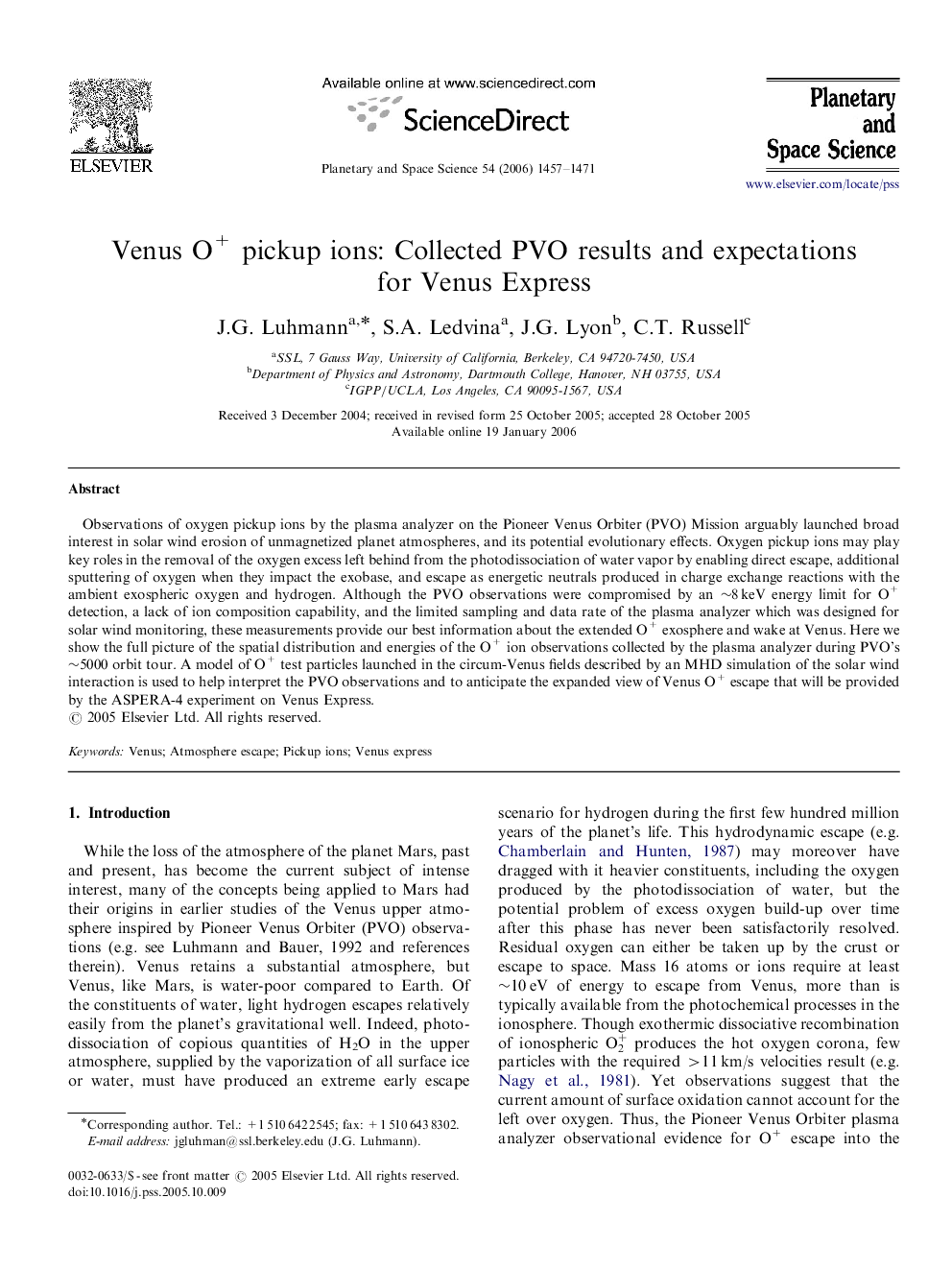| Article ID | Journal | Published Year | Pages | File Type |
|---|---|---|---|---|
| 1782406 | Planetary and Space Science | 2006 | 15 Pages |
Abstract
Observations of oxygen pickup ions by the plasma analyzer on the Pioneer Venus Orbiter (PVO) Mission arguably launched broad interest in solar wind erosion of unmagnetized planet atmospheres, and its potential evolutionary effects. Oxygen pickup ions may play key roles in the removal of the oxygen excess left behind from the photodissociation of water vapor by enabling direct escape, additional sputtering of oxygen when they impact the exobase, and escape as energetic neutrals produced in charge exchange reactions with the ambient exospheric oxygen and hydrogen. Although the PVO observations were compromised by an â¼8Â keV energy limit for O+ detection, a lack of ion composition capability, and the limited sampling and data rate of the plasma analyzer which was designed for solar wind monitoring, these measurements provide our best information about the extended O+ exosphere and wake at Venus. Here we show the full picture of the spatial distribution and energies of the O+ ion observations collected by the plasma analyzer during PVO's â¼5000 orbit tour. A model of O+ test particles launched in the circum-Venus fields described by an MHD simulation of the solar wind interaction is used to help interpret the PVO observations and to anticipate the expanded view of Venus O+ escape that will be provided by the ASPERA-4 experiment on Venus Express.
Keywords
Related Topics
Physical Sciences and Engineering
Earth and Planetary Sciences
Geophysics
Authors
J.G. Luhmann, S.A. Ledvina, J.G. Lyon, C.T. Russell,
